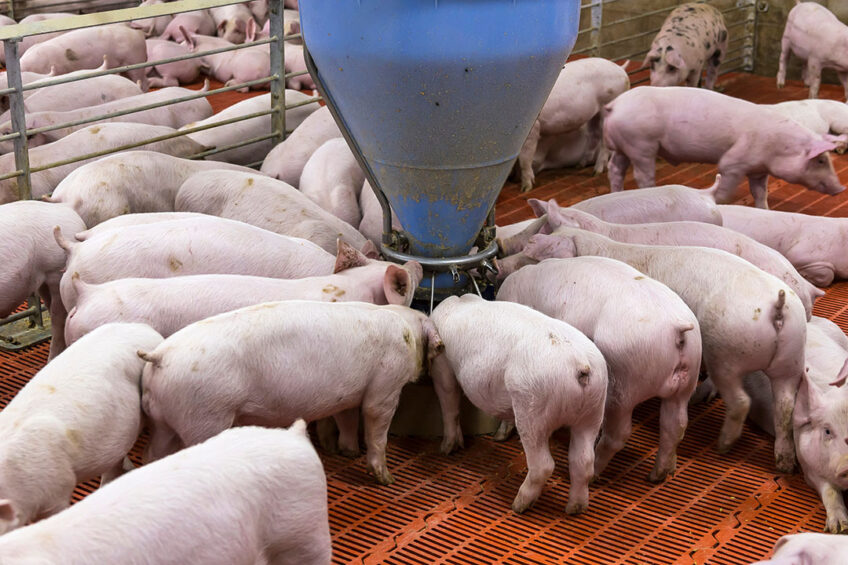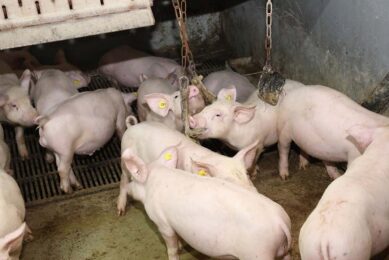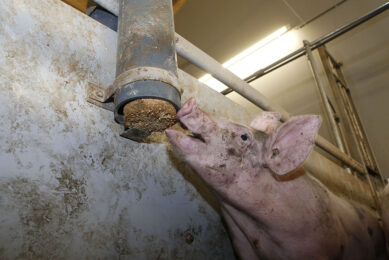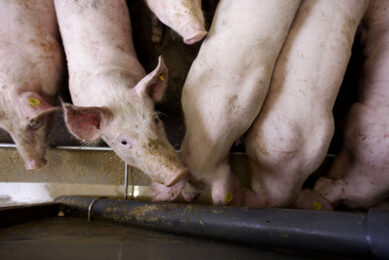Infrared detectors reliable for monitoring pig activity

Researchers from Germany investigated whether a customary passive infrared motion detector system reflects the activity of pigs in barren and enriched rearing systems. In addition, this study determined whether the passive infrared motion detectors accurately represent the activity during active phases of the pigs.
Alterations in pig behaviour are indicators of health and welfare issues. Measuring pigs’ activity can be used to detect behavioural changes. Video analysis or passive infrared motion detectors are some of the methods used to measure the activity of the pigs in pens.
Data collection
The team housed 92 crossbred pigs (Pietrain x (Large White x Landrace)) in 2 compartments that included 2 barren pens with 28 pigs per pen and 2 enriched pens with 18 pigs per pen. The pens were provided with a covered lying area, and a wallow was installed above the feces area where a contact grid to the neighbouring pen was integrated.
In both barren and enriched pens, the researchers provided cotton ropes and wood as occupation materials. In addition, in the enriched pens, chopped straw was available. The team monitored the animals’ health and ear and tail integrity daily. They analysed video recordings for 48 hours to determine the real activity of the pigs in 2 observation periods (day 9 and 10 as well as day 44 and 45). A human observer recorded the number of active pigs for both activity and feces areas. In addition, the team collected passive infrared motion detector data in the barren and the enriched pens for the activity and feces areas. Furthermore, they used motion sensors to record moving pigs in the rearing compartments.
Activity patterns in pigs
The team observed less activity in the morning than in the afternoon. They saw a significant inactive phase around midday. The team saw more activity in the barren than in the enriched pens. Pigs tended to lie outside the lying area in the barren pens, as the availability of space in this area was limited. The activity observed with the passive infrared motion detector in the feces area was higher in the enriched pens than in the barren pens due to the design of the feces area. The enriched pens are smaller with a smaller feces area and have a smooth transition to the activity area through the wallow and the contact grid. This improves the pigs’ acceptance of the feces area. However, due to the presence of additional equipment within the feces area, pigs used the feces area not exclusively for excretory behaviour, but also for other behaviour such as visiting the contact grid.
Digital passive infrared motion detector
The passive infrared motion detector detects infrared radiation emitted from warm bodies. Factors such as pig size, stocking density, temperature, dust, and ammonia affect the detection performance of the detector. In the feces area calmer movements such as defecating are observable. However, these slow movements are less distinguishable from the floor, especially when the pigs grow larger. Intenser activity such as playing occurs more in the activity area, which is larger than the feces area. Therefore, the passive infrared motion detector can potentially more easily detect intense activities.
Conclusions
The authors concluded that the activity measurement methods including video analysis of dynamic background subtraction, and passive infrared motion detectors are useful and reliable tools to observe pig activity.
 Beheer
Beheer








 WP Admin
WP Admin  Bewerk bericht
Bewerk bericht